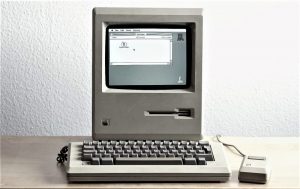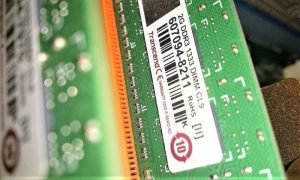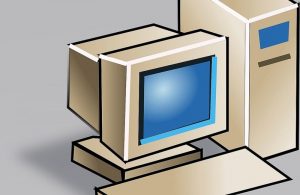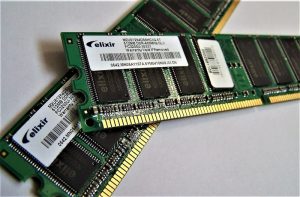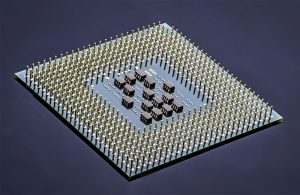First generation of computers
Modern computer era owes much to the great technological advances that took place during World War II. Thus, the invention of electronic circuits, vacuum tubes and capacitors replace the generation of mechanical components while numerical calculation replaces analog calculation. The computers and products of this era constitute the so-called first generation of computers.
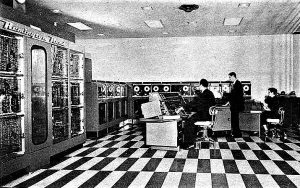
- Date: 1951 to 1958
- Featured Computers: Atanasoff Berry Computer, MARK I, UNIVAC, ENIAC
What is the first generation of computers?
The first generation of computers was launched in the middle of the 20th century, specifically between 1946 and 1958, a period that generated great technological advances based on the search for an aid instrument in the scientific and military fields. These computers were very notorious and particular for the magnitude of their size and for the little power to acquire one.
Characteristics of the first generation of computers
The first generation of computers generated in the mid-twentieth century had the first indication or antecedent of modern computers, but among its main characteristics were its large size as well as its high cost of acquisition, and the recurrent theme of failures and errors for being experimental.
The computers counted with the use of vacuum tubes to process the information, punched cards for data entry and exit and programs, and used magnetic cylinders to store information and internal instructions.
The first ones on the market cost approximately $10,000. Due to their large size, their use implied a great amount of electricity, generating an overheating in the system, requiring special auxiliary air conditioning systems (in order to avoid this overheating). For example, the large ENIAC computer weighing up to 30 tons.
The first-generation computers used magnetic drums as data storage elements to be changed later in the second generation by ferrite memories.
History of the first generation of computers
The historical development of the first generation of computers does not have an exact beginning, since it is the result of previous discoveries and experimentation from different authors, but in this case would begin to take its development since the twentieth century.
The design of Charles Babbage’s analytical machine collected ideas as a primitive way of giving orders to the machine for the automatic performance of calculations and the introduction of data storage systems. These ideas were incorporated into the design of the ENIAC, the first electronic computer to be built. In it, they were later based for the UNIVAC I, which was the first computer to be manufactured commercially, as well as being the first to use a compiler to change the language from program to machine language.
Its main advances were the system of magnetic tapes, which were read back and forth, and the possibility of checking errors. The introduction of integrated circuits allowed the appearance of the first desktop computer in 1974. This immediate success led to the appearance of the IBM PC in 1981.
First generation of computers inventors
- Howard Aiken (1900- 1973), developed the Automatic Sequence Controller Calculator (ASCC), where, at the same time, he relied on Babbage’s work with the analytical machine, managing to build the Mark 1, the first electro-mechanical computer (1944), which had a speed of a couple of tenths of seconds to add or subtract, two seconds to multiply two numbers of 11 digits and divide in a term of more or less 4 seconds.
- Eckert and Mauchly contributed to the development of first-generation computers by forming a private company and building UNIVAC I, which the Census Committee used to evaluate the 1950 census. IBM had a monopoly on punch card data processing equipment.
- Von Neumann, the first to use a binary or double arithmetic in an electronic computer. Although his greatest contribution occurs with the collaboration with Arthur W. Burks and Herman. H. They write Discussion of the logical design of an electronic computing instrument, which served as a basis (even today) for computer construction. Ideas such as: the central concept, which allowed programs and data to be organized in the same medium (memory) and the use of the first machine to use magnetic tapes, such as the EDVAC design, Electronic discrete variable automatic computer.
Featured PCs from the first generation of computers
- Atanasoff Berry Computer (ABC): The first automatic electronic digital computer developed between 1937 and 1942, which was named in honor of its two authors, John Vicent Atanasoff and his assistant, Clifford Berry. It was able to perform with a high level of accuracy equations of up to 29 unknowns.
- MARK I: The first electro-mechanical order, which was the product of Howard Aiken, who based his research in the field, such as Babbage’s work. Which leads him to be the founder of the ASCC, Automatic Sequence Controller Calculator. This computer had a magnitude of 15 meters long x 2.4 meters high, as it was made up of about 800,000 pieces and more than 804 km of wiring. Its speed was not the best, however, was a breakthrough for the time and later came to build the MARK II and MARK III.
- UNIVAC: Universal Automatic Computer opened the way for the explosive development and improvement of computers that would be produced. It first appeared in 1951, being the first digital computer for commercial Its creators were John Mauchly and John Presper Eckert, taking around 5 years for its realization. It was characterized, like all computers of this generation, by its magnitude because it weighed 7,257 kg, consisting of 5,000 vacuum tubes and could perform about 1,000 calculations per second, being quite fast for his time.
- ENIAC (Electronic Numerical Integrator And Computer): created in 1943 by John W. Mauchly and John Presper Eckert, with the purpose of providing help or facilitating problems in the military field, since it required an instrument that was used as a medium. Its implementation took about 3 years and still generated a good number of problems apart from its enormous size and energy consumption required for its operation. In addition to that, it also presented problems with the programming as it was very complex to modify, being a model quickly surpassed.
How to cite this article?
Briceño V., Gabriela. (2019). First generation of computers. Recovered on 24 February, 2024, de Euston96: https://www.euston96.com/en/first-generation-of-computers/



